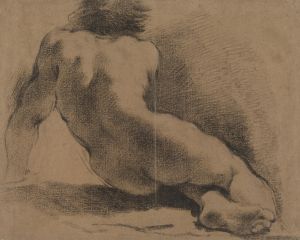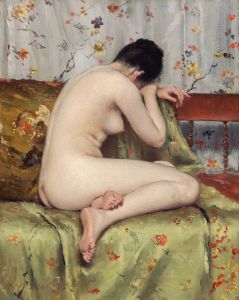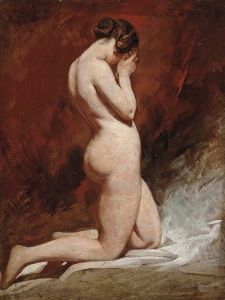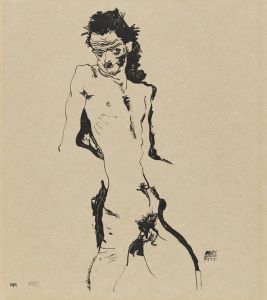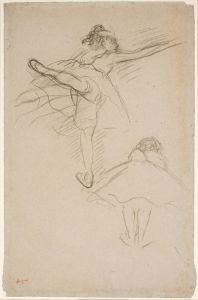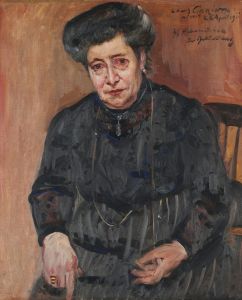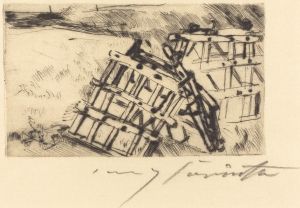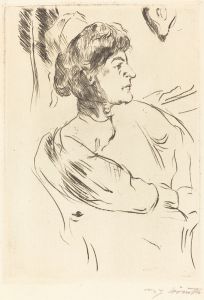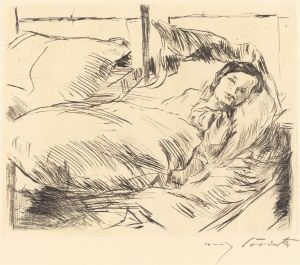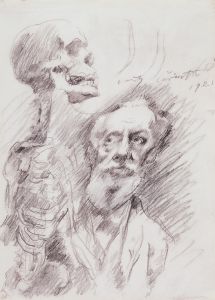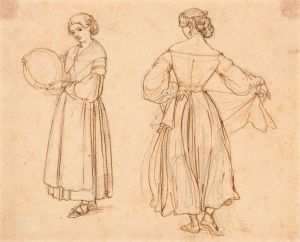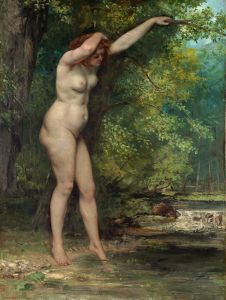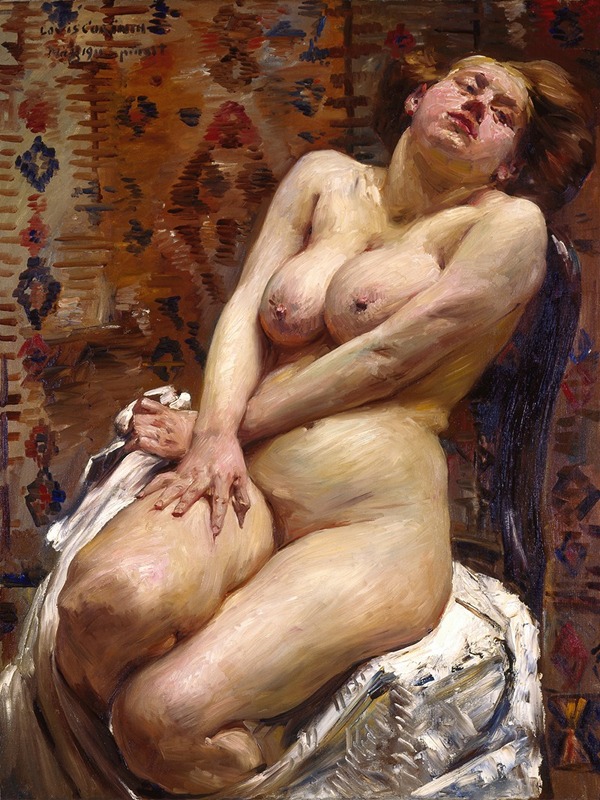
Nana, Female Nude
A hand-painted replica of Lovis Corinth’s masterpiece Nana, Female Nude, meticulously crafted by professional artists to capture the true essence of the original. Each piece is created with museum-quality canvas and rare mineral pigments, carefully painted by experienced artists with delicate brushstrokes and rich, layered colors to perfectly recreate the texture of the original artwork. Unlike machine-printed reproductions, this hand-painted version brings the painting to life, infused with the artist’s emotions and skill in every stroke. Whether for personal collection or home decoration, it instantly elevates the artistic atmosphere of any space.
Lovis Corinth's painting Nana, Female Nude is a notable work by the German artist, created in 1911. Corinth, a prominent figure in the transition from Impressionism to Expressionism, was known for his dynamic brushwork and vivid use of color. This painting exemplifies his mature style, characterized by a bold and expressive approach to the human form.
The subject of the painting, a nude woman identified as "Nana," is depicted reclining on a bed in a relaxed yet provocative pose. The title "Nana" may reference Émile Zola's 1880 novel of the same name, which tells the story of a courtesan in Paris. However, there is no direct evidence linking Corinth's painting to Zola's work beyond the shared name. The use of the name "Nana" was relatively common in art and literature of the late 19th and early 20th centuries, often associated with themes of sensuality and modern femininity.
In Nana, Female Nude, Corinth employs loose, energetic brushstrokes and a rich palette to create a sense of immediacy and vitality. The figure's flesh tones are rendered with a mix of warm and cool hues, giving the body a lifelike quality while also emphasizing the painterly texture of the surface. The background is less detailed, with broad, gestural strokes that draw attention to the central figure. This compositional focus on the nude subject reflects Corinth's interest in exploring the human form as a primary artistic theme.
The painting is often noted for its candid and unidealized portrayal of the female body, which was a departure from the more polished and idealized nudes of earlier academic traditions. Corinth's approach aligns with the broader trends in modern art during this period, as artists sought to challenge conventional standards of beauty and representation.
Nana, Female Nude is housed in the collection of the Städtische Galerie im Lenbachhaus in Munich, Germany. The Lenbachhaus is renowned for its extensive holdings of works by Corinth and other artists associated with the Munich Secession, a progressive art movement that Corinth joined in the late 19th century. The painting remains an important example of Corinth's contribution to modern art and his ability to capture the complexity of human emotion and physicality through his distinctive style.
This work continues to be studied and appreciated for its artistic and historical significance, reflecting Corinth's mastery of technique and his engagement with the evolving cultural and artistic currents of his time.





